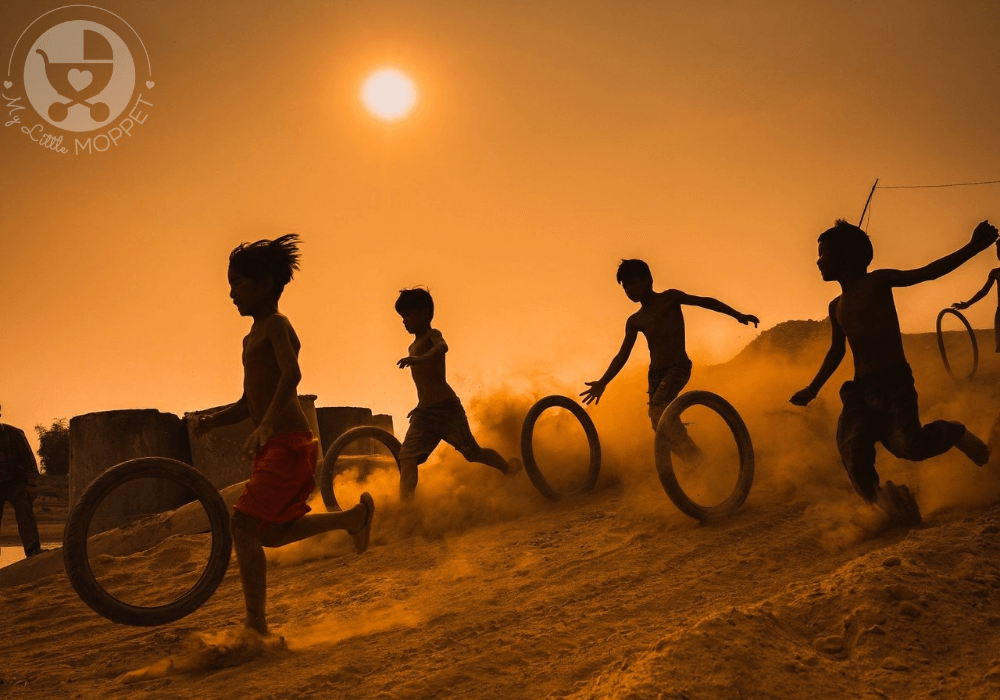Introduction to Traditional Games of India
India, with its rich cultural heritage, boasts a plethora of traditional games that have been played for centuries. These games are not just sources of entertainment but also reflections of the country’s diverse history, values, and societal norms. In this article, we delve into the world of traditional games of India, exploring their history, regional variations, cultural significance, and much more.
History and Cultural Significance
Traditional games in India have a long and illustrious history, dating back thousands of years. Many of these games find their roots in ancient scriptures and mythologies, showcasing their deep cultural significance. Games like “Pachisi” and “Chaturanga” have been mentioned in texts like the Mahabharata and the Ramayana, highlighting their importance in ancient Indian society. These games were not just pastimes but were often imbued with moral and philosophical lessons, shaping the minds of players.
Popular Traditional Games Across India
Children’s Games
Children in India have always enjoyed a wide array of traditional games that are not just entertaining but also help in physical and cognitive development. Games like “Kho Kho,” “Gilli Danda,” and “Lagori” are popular among children across the country. These games not only promote teamwork and sportsmanship but also foster social bonding among kids.
Adults’ Games
While children have their set of traditional games, adults too indulge in various recreational activities that have been passed down through generations. Games like “Kabaddi,” “Pehlwani,” and “Mallakhamb” are popular among adults, especially in rural areas. These games not only provide physical exercise but also serve as a means of cultural expression and community bonding.
Regional Variations
India’s diverse cultural landscape is reflected in the plethora of traditional games that vary from region to region.
North India
In North India, games like “Kite Flying” and “Kancha” (marbles) are immensely popular. The festival of “Makar Sankranti” sees people of all ages flying kites, showcasing their skill and dexterity.
South India
South India boasts its own set of traditional games, including “Pallanguzhi,” “Kabaddi,” and “Silambam.” These games are deeply ingrained in the culture of the region and are often played during festivals and special occasions.
East India
Games like “Gilli Danda” and “Pachisi” find prominence in East India, where they are played with great enthusiasm during local fairs and festivities.
West India
In the western part of the country, games like “Garba” and “Dandiya Raas” are synonymous with celebrations, especially during the festival of “Navratri.”
Impact on Society and Education
Traditional games of India play a significant role in shaping society and imparting valuable lessons to players. These games promote values like teamwork, discipline, and perseverance, which are essential for personal and professional growth. Moreover, traditional games also have educational benefits, improving cognitive skills and enhancing problem-solving abilities.
Challenges and Preservation Efforts
Despite their cultural significance, many traditional games of India are facing the threat of extinction due to rapid urbanization and the influx of modern forms of entertainment. However, various organizations and individuals are working tirelessly to preserve and promote these games through initiatives like workshops, tournaments, and cultural events.
Health Benefits of Traditional Games
Apart from their cultural and social significance, traditional games of India offer numerous health benefits. Games like “Kabaddi” and “Kho Kho” promote physical fitness and agility, while games like “Chess” and “Pachisi” stimulate the mind and improve cognitive abilities. Moreover, these games encourage outdoor play and reduce screen time, contributing to overall well-being.
Traditional Games in Modern Times
In the age of smartphones and video games, traditional games of India are facing stiff competition from modern forms of entertainment. However, there is a growing trend of rediscovering and reviving these age-old games, especially among the younger generation. Events like “Heritage Games Festivals” are gaining popularity, providing a platform for people to reconnect with their cultural roots.
Promotion and Awareness
To ensure the preservation and promotion of traditional games, it is essential to create awareness among the masses about their cultural significance and benefits. Schools and educational institutions can play a vital role in reintroducing these games to the younger generation through curriculum integration and extracurricular activities. Additionally, government support and sponsorship for events and initiatives can go a long way in revitalizing interest in traditional games.
Conclusion
Traditional games of India are not just relics of the past but invaluable treasures that connect us to our rich cultural heritage. By preserving and promoting these games, we not only celebrate our diversity but also ensure that future generations inherit a legacy worth cherishing.
FAQs on Traditional Games of India
- Q: What are some popular traditional games played during festivals in India?
- A: Games like kite flying, dandiya raas, and garba are popular during festivals like Makar Sankranti and Navratri.
- Q: Are traditional games of India only for entertainment, or do they have other benefits?
- A: Traditional games promote social bonding, teamwork, physical fitness, and cognitive development among players.
- Q: How can one contribute to the preservation of traditional games?
- A: One can contribute by participating in cultural events, organizing workshops, and spreading awareness about the importance of traditional games.
- Q: Are traditional games losing popularity in modern Indian society?
- A: While traditional games face competition from modern forms of entertainment, efforts are being made to revive interest in these games through various initiatives.
- Q: Can traditional games of India be integrated into educational curriculums?
- A: Yes, incorporating traditional games into school curriculums can help in promoting cultural awareness and imparting valuable life skills to students.



